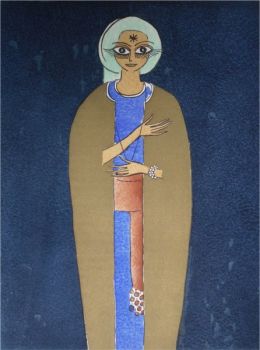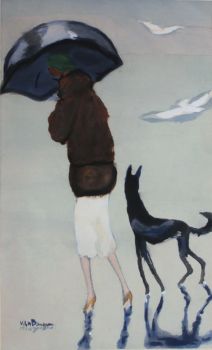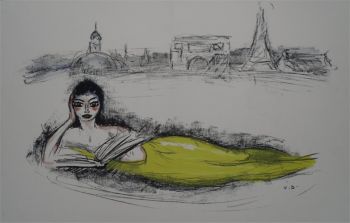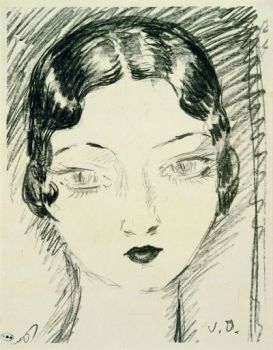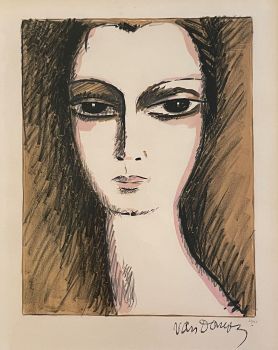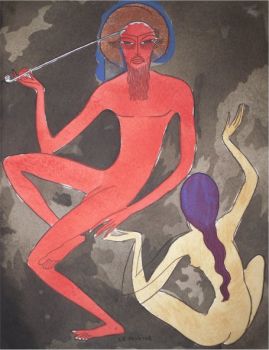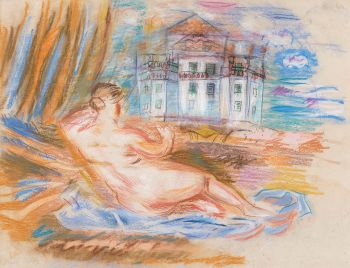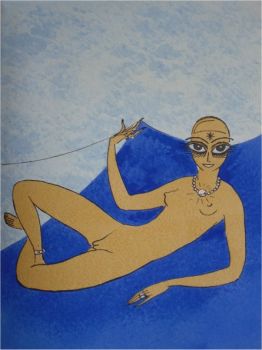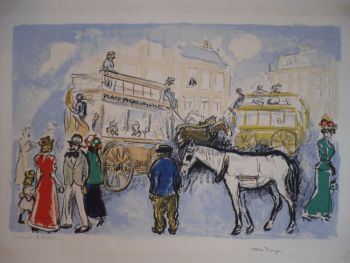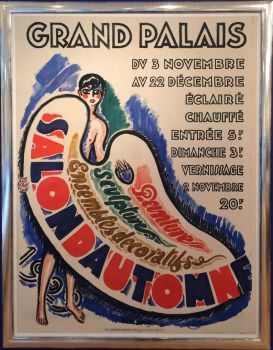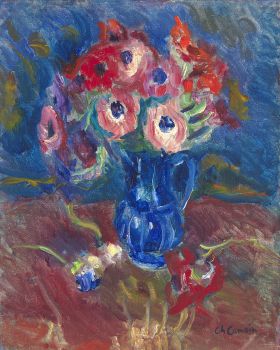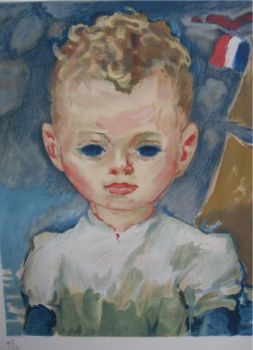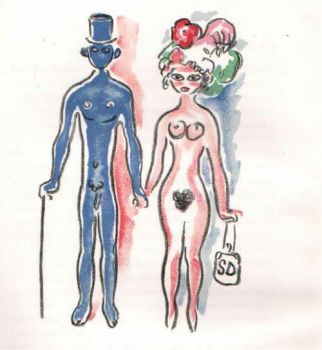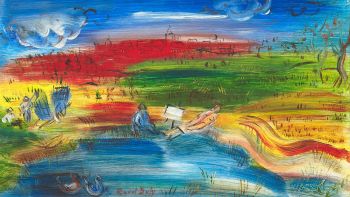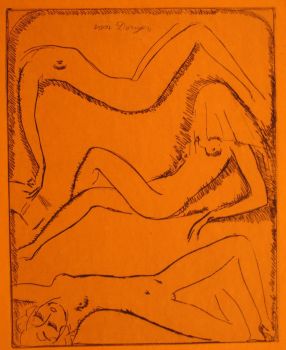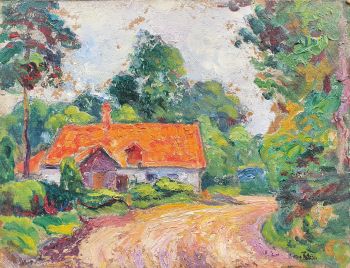The role of Fauvisme in the history of art
Initially, the name 'Fauvism' was used as a term of abuse, but it soon found an important place in art history as a new designation of style. The Fauvist movement was relatively short-lived, from about 1904 to 1908, but it had a major influence on the development of modern art. In this article, we briefly describe the characteristics and importance of the Fauvist art movement.
Meaning of Fauvism
The term 'fauvism' comes from the French word 'les fauves', which means 'the wild beasts'. It was the French journalist-critic Louis Vauxcelles who first gave this name at the 1905 Salon d'Automne for this new style of painting.
He described one of the exhibition rooms as the "Cage aux fauves" (cage with wild animals). This name was soon given to the Fauvists because of their use of intense, vibrant colors often applied in thick, expressive brushstrokes.
 Example of a Fauvist still life, 'Parrot tulips', Henri Matisse 1905
Example of a Fauvist still life, 'Parrot tulips', Henri Matisse 1905
Characteristics of Fauvism
The Fauvists were a loose group of artists who shared a common interest in color and the use of intense, vibrant hues. They rejected the traditional rules of academic art, which emphasized realistic rendering and subdued colors.
Instead, the Fauvists sought to express emotion and feeling through color, and they used color in a way that was often exaggerated and distorted. Fauvism was mainly characterized by bold use of color and simplified forms.
 A Fauvist village view by Maurice de Vlaminck - Restaurant La Machine at Bougival, 1905-6
A Fauvist village view by Maurice de Vlaminck - Restaurant La Machine at Bougival, 1905-6
The Fauvists were also influenced by non-Western art, especially the art of Africa and Oceania. They admired the simplicity and directness of these works and incorporated elements from them into their own art.
The brilliant areas of color, not the representation, are the subject of their painting. The Fauvists mainly painted landscapes, seascapes, cityscapes and people in nature or in the city. These had no symbolic significance, but only served as a starting point to arrive at a personal way of painting .
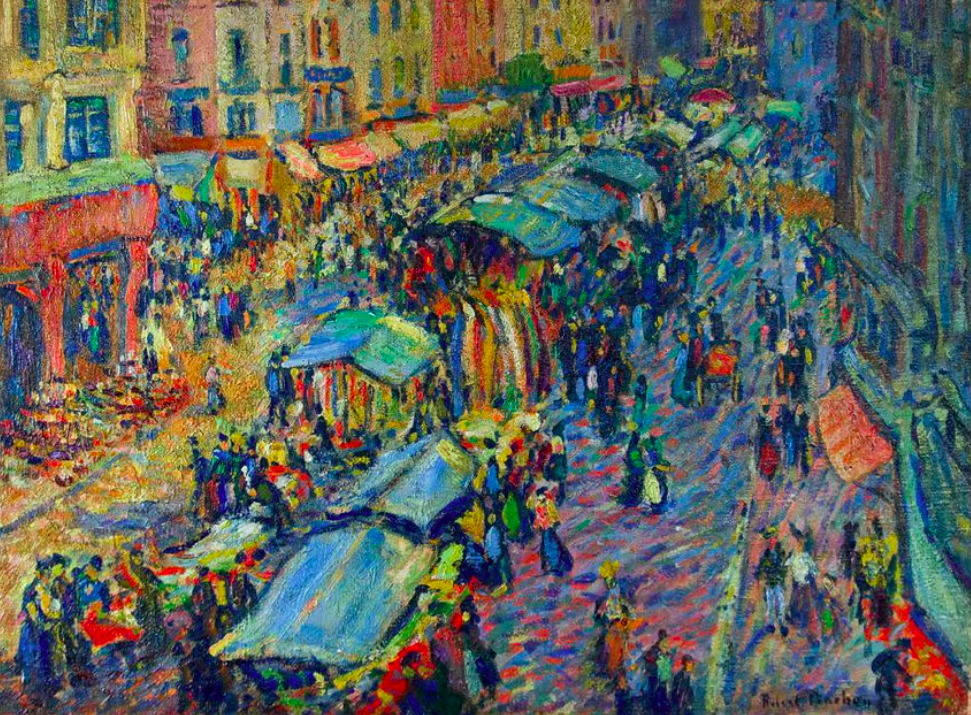 A Fauvist Cityscape by Robert Antoine Pinchon, 'Le marché de Pont Audemer'
A Fauvist Cityscape by Robert Antoine Pinchon, 'Le marché de Pont Audemer'
Well-known Fauvist artists
One of the most prominent figures of the Fauvist movement was Henri Matisse. Matisse's work was characterized by his use of bright, bold colors and his simplified forms. He often painted scenes of everyday life, but transformed them into vibrant, expressive works of art.
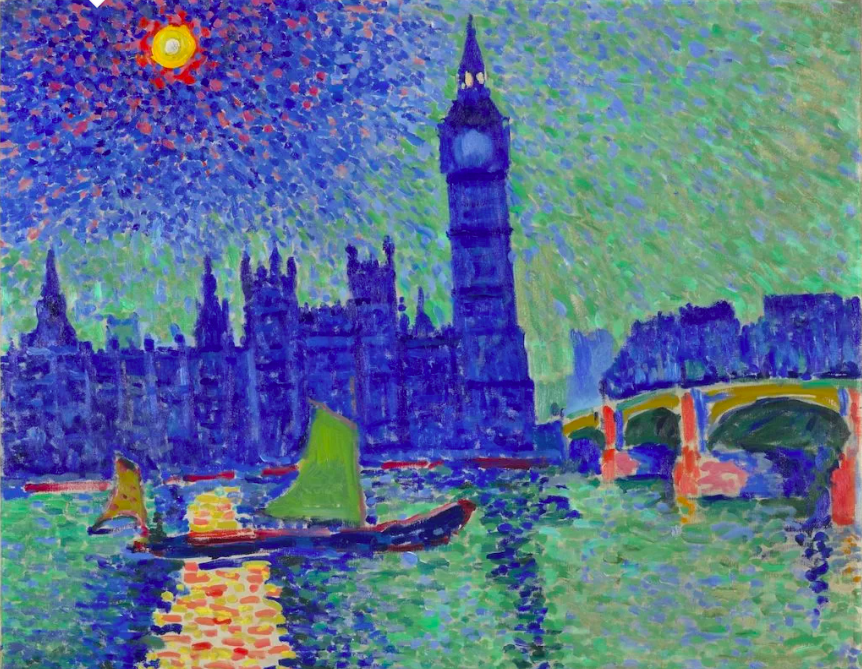 Big Ben, London - Painting by Andre Derain - Fauvism Art
Big Ben, London - Painting by Andre Derain - Fauvism Art
Another important Fauvist was André Derain. Derain's work resembled Matisse's, but he often used more earthy tones in his paintings. His work often focused on landscapes and cityscapes, which he painted in a bold, energetic style.
A well-known Dutch fauvist is Kees van Dongen.
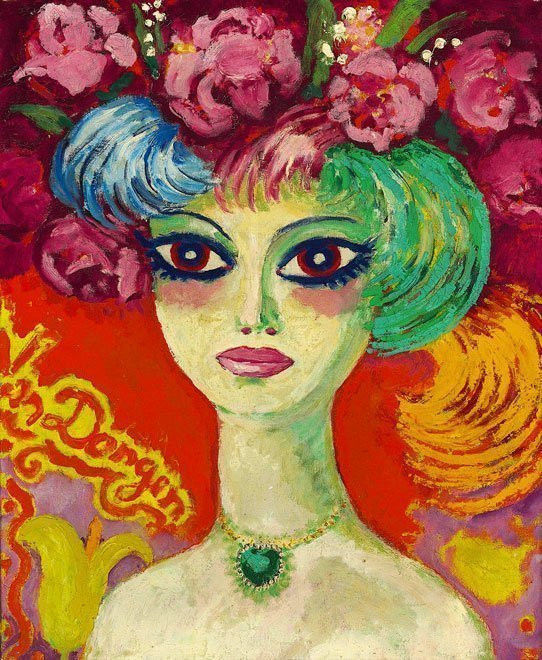 Fauvist portrait of a young lady by Kees van Dongen
Fauvist portrait of a young lady by Kees van Dongen
Influence of Fauvism
Fauvism had a major influence on the development of modern art. The use of color and simplified forms influenced later movements such as expressionism and abstract art. The Fauvists' rejection of traditional academic art also paved the way for other avant-garde movements of the 20th century.
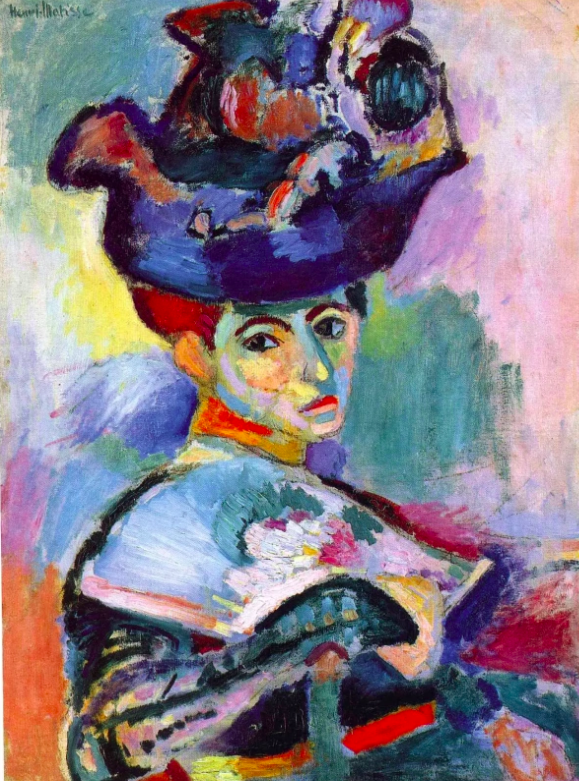 Example of a Fauvist portrait, 'Woman with a hat" by Henri Matisse, 1905
Example of a Fauvist portrait, 'Woman with a hat" by Henri Matisse, 1905
Conclusion
Fauvism was a short-lived but highly influential art movement that emphasized the use of intense, vibrant colors and simplified forms.
The rejection of traditional academic art and the emphasis on emotion and feeling paved the way for later modern art movements. The bold use of color and energetic style of the Fauvists continue to inspire artists to this day.
Where can you buy the best Fauvism Art?
At Gallerease we only sell curated art from the best galleries where you are assured of authenticity, quality and good provenance. Look for our extensive range of Fauvist art and Impressionist art via this link.
* The image in the header is a detail from a Fauvist painting by Oskar Kokoschka, 'Mandril', 1926


